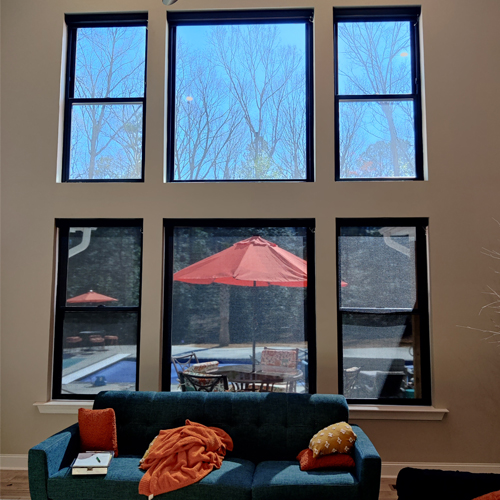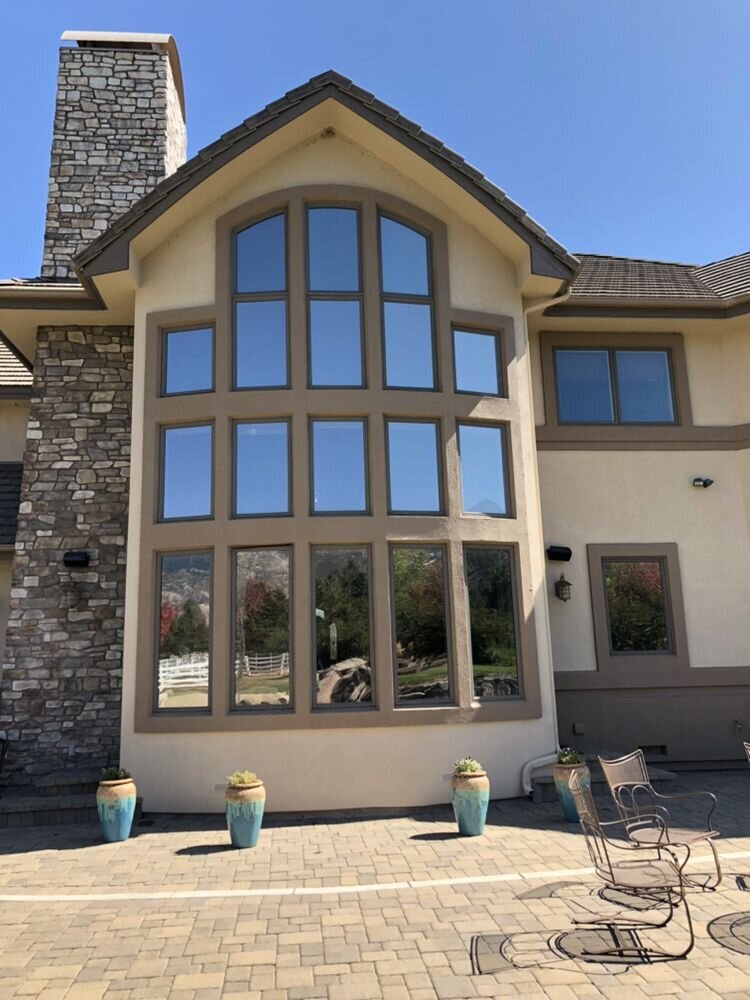How Residential Window Tinting Boosts Your Home's Power Performance
Residential window tinting presents a compelling solution for home owners seeking to enhance energy performance within their space. By applying specialized films to home windows, it successfully reduces heat transfer, therefore supporting interior temperatures and lessening the requirement for too much heating or air conditioning. This not just reduces energy intake however additionally offers a much more comfy environment by reducing glare. Nonetheless, understanding the nuances of just how tinting jobs and selecting the proper kind for your home can be critical. Strangely enough, what variables should one consider before making this investment?
Comprehending Window Tinting
Recognizing home window tinting is essential for property owners seeking to enhance both convenience and power effectiveness in their space. Residential Window Tint. Home window tinting involves the application of a slim film to the interior or outside surface of glass windows. This film can significantly regulate the amount of sunlight and warm that goes into a home, thus influencing interior climate conditions
There are various types of window tinting movies offered, each with distinct residential or commercial properties. The effectiveness of window tinting is usually determined by its Visible Light Transmission (VLT) percentage, which suggests exactly how much light can pass via the movie.
Benefits of Power Efficiency
Window tinting not just improves looks but additionally plays a considerable function in improving energy performance within property spaces. By lowering warm transfer with home windows, tinted movies create a more secure indoor climate, which can lead to considerable decreases in energy intake for cooling and heating. This power efficiency translates into lower utility costs, giving homeowners with significant lasting financial savings.

Furthermore, window tinting enhances the comfort of living rooms. By lessening glare and obstructing dangerous UV rays, tinted home windows develop an even more enjoyable environment, which can result in enhanced well-being for residents. The protection versus UV rays also assists protect furnishings and flooring from fading, adding to the durability of household items.
Just How Tinting Works
Tinting movies operate via a combination of advanced products and technologies made to manage the quantity of solar power going into a home. Primarily made up of polyester, these movies commonly incorporate ceramic or metallic bits that show and take in warmth. This dual capacity permits them to dramatically decrease the infiltration of ultraviolet (UV) rays and infrared radiation while permitting visible light to travel through.
The performance of window tinting is determined by its solar warmth gain coefficient (SHGC), which indicates just how much solar power is sent through the home window. Lower SHGC values are better as they denote better warm denial. In addition, window tints can include a variety of shades, allowing property owners to personalize their visual choices while enhancing power performance.
Furthermore, these films function as an obstacle, preventing heat loss during chillier months by showing indoor heat back right into the living area. This thermal insulation result enhances the air conditioning benefits acquired throughout warmer months, adding to a well balanced interior environment year-round. By taking care of solar power properly, residential my sources window tinting not only enhances comfort however additionally plays an essential duty in reducing power intake and decreasing energy expenses.
Selecting the Right Tint

There are different kinds of window movies readily available, including colored, metalized, and ceramic. Dyed movies are cost-efficient however might have limited durability. Metalized films offer better warmth being rejected however can disrupt electronic signals. Ceramic films supply exceptional warmth control without jeopardizing exposure and are highly long lasting, making them a preferred selection.
Noticeable light transmission (VLT) is one more important aspect, as it indicates the quantity of natural light that can travel through the colored glass. House owners ought to pick a tint with a VLT that enhances their illumination preferences while still giving ample glow decrease.
In addition, assessing the solar warmth gain coefficient (SHGC) can help identify how well a tint can block warmth from sunshine. A reduced SHGC indicates far better warmth control, inevitably boosting power efficiency.
Installation and Upkeep Tips
Proper installment and maintenance are essential components in maximizing the advantages of property window tinting. Experts also use specialized tools and strategies, which can improve the resilience and performance of the tint.
Complying with installment, maintenance is vital to extend the life of the home window film. It is suggested to wait at the very least thirty days prior to cleaning up the colored home windows to allow the adhesive to treat totally. When cleaning, utilize a soft towel and a gentle, ammonia-free cleaner to avoid damaging the movie. Stay clear of rough products that can scratch the surface.
Furthermore, regular assessments are valuable. Look for any peeling or bubbling, which could indicate inappropriate installment or put on over time click over here now - Residential Window Tint. Addressing these issues quickly can stop more damages and preserve energy effectiveness. By adhering to these installation and Read Full Report maintenance suggestions, house owners can ensure their window tinting remains to provide significant power financial savings and comfort for many years to come.
Conclusion
In conclusion, domestic window tinting serves as a reliable service for boosting energy performance within homes. By lowering heat transfer and obstructing damaging UV rays, window movies add to decrease energy usage and boosted indoor comfort.
Home window tinting includes the application of a slim film to the interior or outside surface area of glass home windows. By decreasing warmth transfer through home windows, colored movies create an extra secure interior environment, which can lead to considerable reductions in power intake for heating and air conditioning.The effectiveness of home window tinting is gauged by its solar heat gain coefficient (SHGC), which indicates exactly how much solar energy is sent through the home window. By handling solar energy properly, residential window tinting not just boosts convenience but likewise plays a vital function in reducing energy usage and lowering energy costs.
By lowering warmth transfer and blocking hazardous UV rays, home window movies add to reduce energy intake and enhanced interior comfort.